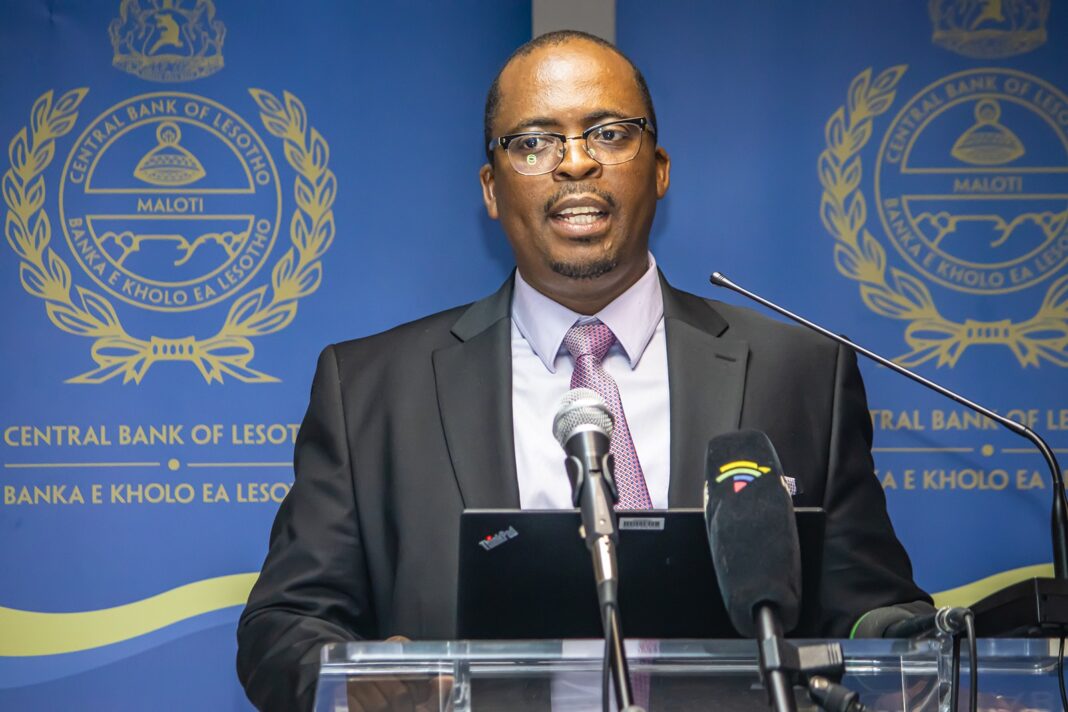By Seleoe Nonyane
The Monetary Policy Committee (MPC) of the Central Bank of Lesotho (CBL) decided this week to increase the CBL rate to 7.25 percent per annum from 7.00 percent per annum from the previous 98TH MPC meeting.
The committee also decided to revise downward the current Net International Reserves (NIR) target floor OF US$650 million to US$640 million.
The Governor of CBL Maluke Letete says at this level, the NIR target will be sufficient to maintain a one-to-one exchange rate peg between Loti and the South African Rand.
He said the decision was taken after considering the NIR developments outlook, regional inflation and interest rate outlook, domestic economic conditions and the global economic outlook.
Letete therefore revealed that the committee will continue to closely assess the global economic developments and their impact on the domestic economy especially the NIR and respond accordingly.
He said the level of the CBL’s NIR improved between November 2022 and January 2023, remaining above the target floor of US$650 set by the MPC in its meeting in November 2022 and adequate to support the loti-rand exchange rate peg.
“During the first quarter of 2023, the NIR is expected to decrease before recovering markedly in the second quarter of 2023 due to the anticipated recovery in the Southern African Customs Union (SACU) revenue.
“In Summary, economic activity continued to slow down for most economies. The global growth is expected to further weaken due to the ongoing Russia-Ukraine war and tighter global financial conditions.
“Inflation pressures in most countries remain elevated despite the slowdown observed in recent months”, Letete said.
He expressed that the domestic economy is expected to deteriorate further amid weaker global growth prospects and elevated pressures.
The CBL governor warned that based on the Composite Indicator of Economic Activity (CIEA), the domestic economy of Lesotho continues to underperform on account of structural rigidities and policy uncertainty.
“The economic activity was estimated to have contracted by 2.0 percent in November 2022 following an 8.1 percent decline in the preceding month, indicating weakened production and aggregate demand.
“In terms of the outlook, the economy is expected to improve driven largely by construction projects,” he said.
Moreover, the domestic inflation continued to moderate due to the decline in the non-food component. However, inflation is expected to remain high in the medium term due to, amongst others, high food inflation and protracted supply chain disruptions.
According to the governor, the current account balance improved in the third quarter of 2022 as a result of a better performance exports.
“It registered a deficit equivalent to 0.2 percent of Gross Domestic Product (GDP) compared to 10.8 percent in the quarter ending in June 2022.
“Exports were boosted by textile and clothing exports to South Africa and the United States market coupled with an increase in diamond exports,” he revealed.
Letete also noted that the Government Budgetary operations recorded a surplus equivalent to 4.7 percent of GDP in the fourth quarter of 2022 compared to a revised deficit of 6.0 percent of GDP in the previous quarter, reflecting a significant decline in government expenditure against a slight increase in total revenue.
The stock of public debt was estimated at 61.7 percent of GDP compared to 62.2 percent in the quarter ending in September 2022.
Furthermore, credit to private sector fell by 0.2 percent in the fourth quarter compared to a 3.1 percent increase in the quarter ending in September 2022. This fall is said to be mainly attributable to credit extended to business enterprises while credit to households remained relatively unchanged.
Lastly, the committee noted that the global economic activity has been projected to slow down in 2023 as many economies continue to grapple with the cost-of-living crisis and high debt levels.
“in addition, the resurgence of Covid-19 in some countries and the escalating Russia-Ukraine war continues to weigh negatively on global economic recovery.
“According to the International Monetary Fund (IMF), the global economy is projected to slow down to 2.9 percent in 2023,” he concluded.









